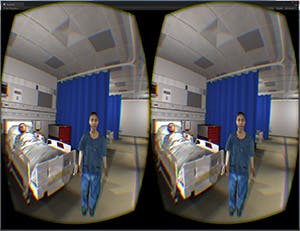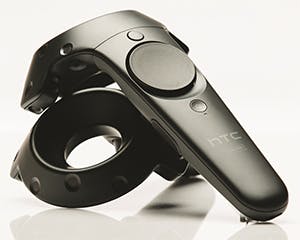Virtual Reality
 Recent hardware and software advances have breathed new life into the Virtual Reality genre. Powerful full system virtual reality headsets such as the Oculus Rift, HTC VIVE and Playstation VR have, or are about to become, commercially available. In addition, more accessible alternatives that integrate with smart phones have now entered the market, such as the Samsung Gear VR Lite and Google Cardboard.
Recent hardware and software advances have breathed new life into the Virtual Reality genre. Powerful full system virtual reality headsets such as the Oculus Rift, HTC VIVE and Playstation VR have, or are about to become, commercially available. In addition, more accessible alternatives that integrate with smart phones have now entered the market, such as the Samsung Gear VR Lite and Google Cardboard.
When aligned with parallel and equally exciting developments in software and peripherals this may well be the time for VR to play an important role within learning and teaching. As such we have been exploring the potential for VR to enhance learning within the Faculty. Following the recent purchase of a number of full system VR headsets and work exploring the art and software pipelines required for development, real potential is emerging for this technology to add to our current simulation learning ecology. Watch this space for further developments.
Technical Lead: Timothy Marquis – Learning Technologist
Gesture Control
 When thinking about applying Virtual Reality within professional education and medical training to support skills development, the capacity to manipulate objects and interact with interfaces quickly comes to the fore of learning design considerations.
When thinking about applying Virtual Reality within professional education and medical training to support skills development, the capacity to manipulate objects and interact with interfaces quickly comes to the fore of learning design considerations.
Whilst the controllers that ship with some VR full system headsets are providing interfaces that support an increasing range of object interaction possibilities, there is always a growing need for finer and more natural motor control and this is causing many developers to look towards third party peripherals.
Leap Motion
The recent release of Leap Motion’s Orion beta update seems to mark a significant step forward in fine hand movement tracking. The update promises far greater sensitivity and management of tracking for parts of the hand that are hidden from the sensor’s line of sight. If you are interested, as we are, in using VR as a simulation tool that supports psychomotor skills development, then the capacity to allow a user to use their hands, by far our most natural interface, is of obvious importance.